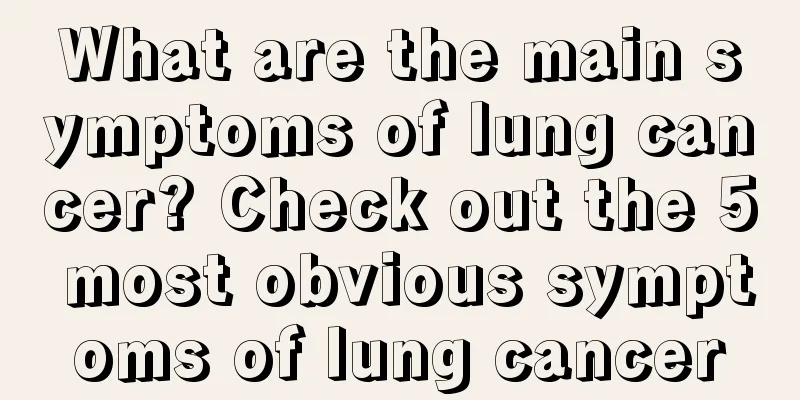What are the main symptoms of lung cancer? Check out the 5 most obvious symptoms of lung cancer

|
The early symptoms of lung cancer are generally not obvious, but if it is advanced lung cancer, it is generally characterized by cough and chest pain. Although the symptoms of late-stage lung cancer are also mainly manifested in these two symptoms, as the disease progresses, this manifestation will become more obvious. The following is an introduction to the symptoms of lung cancer; 1. Bone and joint symptoms: These symptoms are more common. Lung cancer cells can produce certain special endocrine hormones (xenohormones), antigens and enzymes, which act on the bone and joint parts, causing bone and joint swelling and pain, often involving the tibia, fibula, ulna, radius and other bones and joints. The ends of the fingers and toes often swell and become clubbed, and X-ray examinations can show periosteal hyperplasia. 2. Shoulder and back pain: Peripheral lung cancer often develops posteriorly and upwards, eroding the pleura, involving the ribs and chest wall tissue, thus causing shoulder and back pain. Such patients rarely have respiratory symptoms. 3. Hoarseness: Lung cancer metastasis compresses the laryngeal nerve, which can cause vocal cord paralysis and hoarseness. Since lung cancer metastasis can appear in the early stage and sometimes grow faster than the primary lesion, the clinical manifestations of metastasis may appear before the primary lesion. 4. Neurological symptoms: Brain metastasis of lung cancer may cause neurological symptoms such as headache, vomiting, sudden coma, aphasia, hemiplegia, etc. Because the lung symptoms are not obvious, they are often misdiagnosed as thrombosis or brain tumors. 5. Male breast enlargement: About 10%-20% of male lung cancer patients have breast enlargement, some have unilateral enlargement, but most have bilateral enlargement, and this symptom appears about a year earlier than other lung symptoms such as cough, blood in sputum, chest pain, and shortness of breath. This is because some lung cancer cells can secrete chorionic gonadotropin, which can cause breast tissue hyperplasia and breast enlargement. One thing that needs to be pointed out is that some patients may also have chest pain as the first symptom. This situation generally accounts for about 25% of lung cancer patients. This pain is generally characterized by dull pain and invisible pain in the chest. The elderly should pay attention to coughing, chest tightness and chest pain, especially those with a family history of lung cancer. |
>>: How to eat during lung cancer surgery? Diet care methods during lung cancer surgery
Recommend
What is liver shadow
The presence of a shadow in the liver mainly refe...
The back of the last big tooth is swollen and painful
Swelling and pain behind the last molar may be ca...
Immunotherapy for bone cancer
Bone cancer refers to a malignant tumor that occu...
What are the preventive actions for gallbladder cancer
In recent years, the number of patients with gall...
How to treat advanced lung cancer better?
When patients with advanced lung cancer develop s...
Does increased texture on both lungs indicate lung cancer?
Increased bilateral lung texture does not equate ...
Benefits of exercise therapy for lung cancer
What are the benefits of exercise therapy for lun...
What are the treatments for asthma?
When suffering from cough and asthma problems, pa...
What are the main causes of laryngeal cancer?
Laryngeal cancer is a malignant tumor that occurs...
Eat more of these 4 foods if you are prone to acne
Diet can promote the metabolism of the skin, prov...
Symptoms of cervical spine injury
The cervical spine is the most vulnerable part of...
Do you know the side effects of Ganoderma lucidum spore powder?
Although Ganoderma lucidum spore powder has many ...
Why do breast cancer lesions disappear after chemotherapy?
The disappearance of breast cancer lesions after ...
How to treat glioma recurrence? What are the solutions to glioma recurrence?
Glioma is a highly recurrent brain tumor disease....
What are the specific preventive measures for cervical cancer
There are many diseases in the cervix, such as ce...









